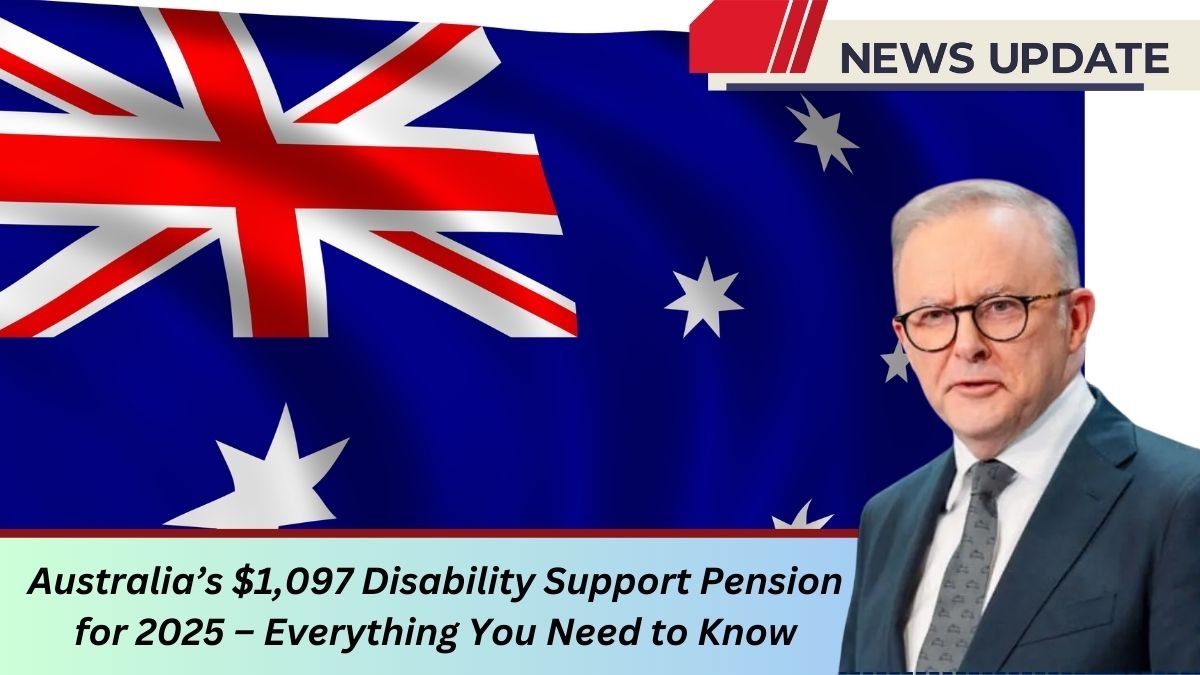Australia’s Disability Support Pension (DSP) takes a crucial milestone in 2025, where the highest fee for individual recipients now stands at $1097 in sync with a fortnight (more than weeks). This has been a key boom over the last couple of years and has become a subject of particular discussion amidst increasing dwelling costs driven through inflation.
For the approximately 756,000 Australians who rely on this charge, understanding this change and its broader context is important to help them budget their finances and maximize their entitlements.
New payment rates explained
Since 20 March 2025, DSP payment rates have been changed as follows:
- For individual recipients 21 years of age and over, the most basic fortnightly cost is currently $1097, compared with $1037. Forty formerly. This represents a rise of 5.7%, more than the overall Consumer Price Index (CPI) inflation change.
- The maximum base rate for members of a couple (i.e., people living together) has increased to $827.40 per person, up from $782.20 previously. This figure maintains the ratio that has long held between single and couple rates (approximately 66% of the combined couple’s payment for singles).
Furthermore, the base rates in these amounts also include supplementary payments like the Pension Supplement and Energy Supplement. The Pension Supplement is currently $81.20 per individual for single recipients and $61.20 for couples. The Energy Supplement is also $14.10 for singles and $10.60 for couples.
Therefore, one DSP recipient who receives the highest amount now gets $1192.30 fortnightly (around $31,000 per year). This is considerably more than it was in other years, yet it is arguable whether or not it is sufficient for people who are not able to work because of disability.
Reasons behind the increase
The cause of this increase is a combination of several factors that are connected together in the economic climate of 2024-25:
- Adjustment mechanism: DSP increases are indexed on the peak of the CPI or Pensioner and Beneficiary Living Cost Index (PBLCI) and then applied against the Male Total Average Weekly Earnings (MTAWE). This time the PBLCI recorded a higher rise than the overall CPI, which means that inflation has affected pension recipients more.
- Extra rise of 1.2%: After sustained lobbying by disability groups, the government declared an extra one-time rise of 1.2%, over the normal adjustment. This rise was particularly aimed at considering increasing costs in areas like health care, energy, and special support services.
Regional Variations and Rent Assistance
A significant aspect of DSP is Commonwealth Rent Assistance (CRA), which differs between regions. It has also been revised in 2025:
- The CRA for single DSP recipients who live alone has been raised to $176.40 fortnightly, while others living with people may be offered $117.60 fortnightly.
But this payment is only on offer if the rent is over a certain limit. The effect of this CRA also differs from one region to another. In Sydney and Melbourne, where the rents are extremely high, the CRA only pays for less than 20% of rent, while in other parts of the country it pays for 30-40%.
Income and asset tests
Income and asset testing are required to get DSP. The thresholds for income and asset testing have also risen in 2025:
- Income test: Single recipients can now receive up to $192 in income without it impacting their pension. Couples have a limit of $336 per fortnight.
- Asset test: Asset limits have been raised to $304,500 for single householders and $456,750 for couples in 2025.
Work incentives and increases
The work incentive in 2025 has also been altered. The most notable alteration is that DSP recipients can now gain 48 working credits every fortnight, which was previously 36 credits. Recipients can use these credits to work above the limit without reducing their pension.
The working hours limit has also been raised to 15 per week, up from 8 previously.
Application process and issues
Though payments have been raised, DSP application is not simple. Application rates for DSP have been sitting at approximately 42% during the last three years, signifying that functional and medical assessments are extremely rigid.
2025 also introduces fresh guidelines to refine the process, particularly for claimants with altering conditions or failing to provide accurate medical certificates.
Result
The rise in DSP to 2025 brings an important financial respite to individuals with disabilities, but it is fit within a complicated system in which numerous structural issues persist. Government reforms continue, and there are bound to be further improvements.
FAQ’s
Q. What is the rate of the new Disability Support Pension (DSP) for single recipients in 2025?
A. The DSP base fortnightly rate for singles aged 21 and older is $1097, up by 5.7% from the former rate of $1037.40.
Q. How much will the new DSP rate be for couples in 2025?
A. The highest base fortnightly rate for a couple’s member is $827.40, from $782.20, which retains the 66% proportion of singles’ payment to couples’ combined payment.
Q. What influenced the DSP rise in 2025?
A. The DSP rise is the result of PBLCI adjustments, a 1.2% further increase, and increasing healthcare, energy, and special support services costs as promoted by disability organizations.











